From Dubrovnik, we traveled to Split, another historic city on the beautiful Adriatic Sea. Split is less expensive than Dubrovnik. Split’s claim to fame is the UNESCO World Heritage Site, Diocletian’s Palace, built for the Roman Emperor Diocletian. Entrance to the palace is free, as the entire palace makes up Split’s old town. Here, although not as extensive as in Dubrovnik, the old polished stone sidewalks can be quite slippery.
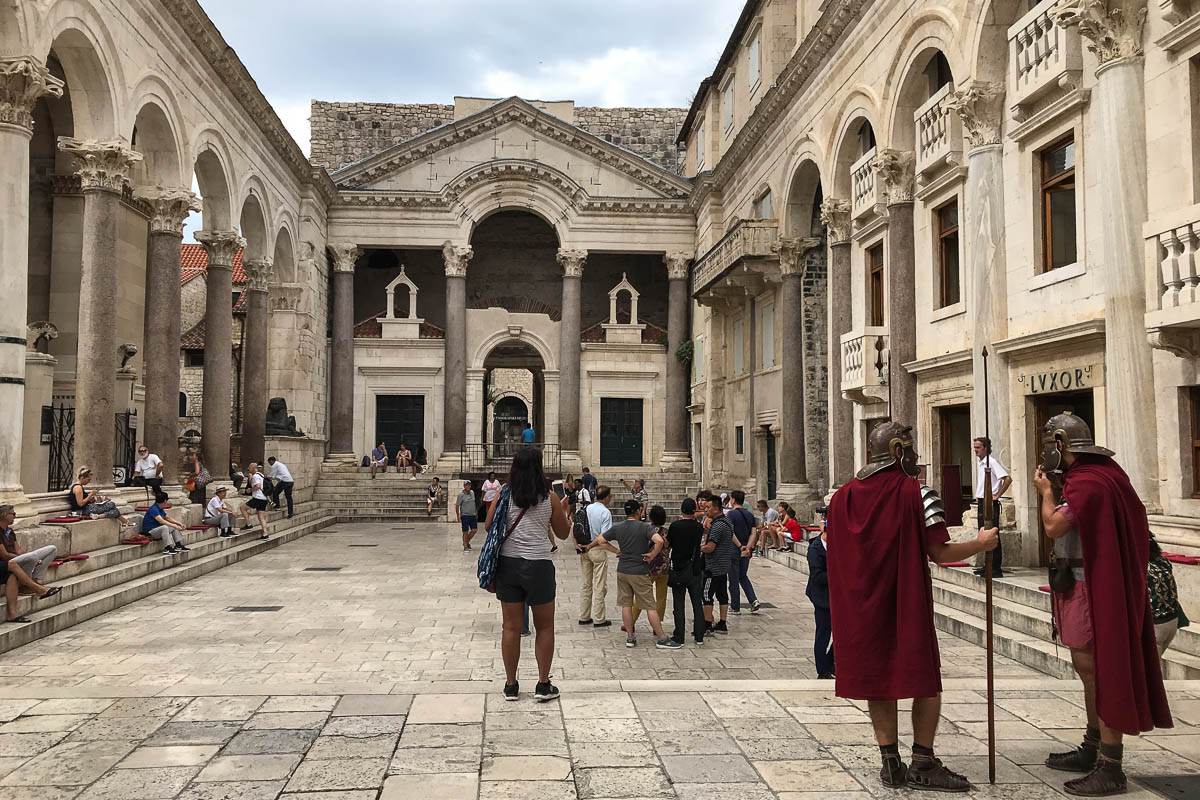
As part of our latest plan to stay put for at least two weeks about every month, we booked an Airbnb for two weeks in Split. A spacious well-equipped comfortable one-bedroom apartment in an ugly Communist-era block building for $57 per night (our apartment in Dubrovnik was $78 per night).
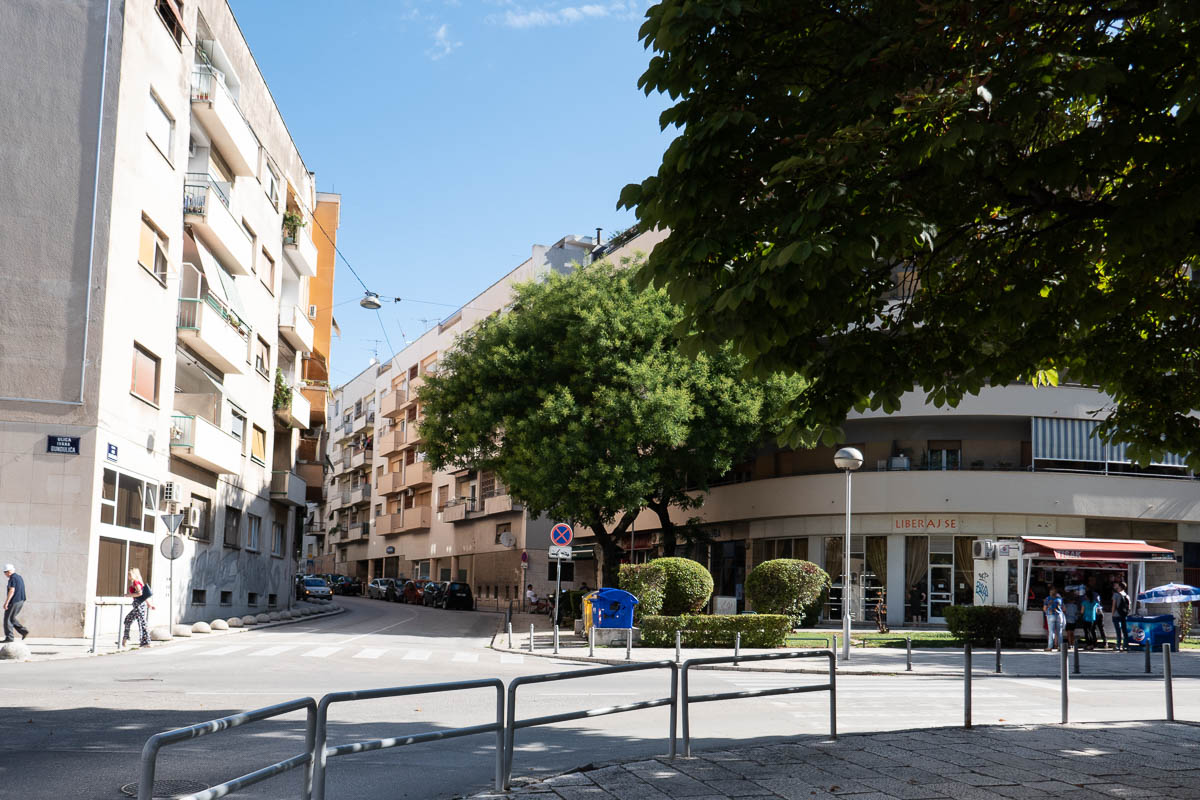
The neighborhood, conveniently located just a few minutes’ walk to the old town, was typical for Split. Some of the buildings closer to the beach were a bit better looking, and houses in the hills surrounding the main part of town were even nicer. We also saw newer more pleasant looking housing in the suburbs on our bus ride from Split to Mostar.
Traveling from Dubrovnik to Split
The most efficient way to travel between Dubrovnik and Split in the summer is by boat (in the winter buses are an option). The two ferry companies are the government-owned Jadrolinija and Krilo . As recommended by our Split Airbnb host, we took the high-speed catamaran ferry run by Krilo. We had booked the 4:30 PM ferry, 210 HRK ($33) each, which was supposed to take 4 hours. We were sitting in a restaurant across the street from the dock observing people boarding the 4:00 PM ferry, which made different stops and took a bit longer.
At a few minutes before 4:00, we were a bit concerned that the 4:30 ferry hadn’t arrived at the dock. Good thing Ian went and inquired! The 4:30 ferry had been cancelled, and we were to board the 4:00 ferry. No signs either on the dock or at the ferry office stating this rather important information. We were a couple of the last passengers to board. Fortunately, the ferry wasn’t full, we found reasonable, quite comfortable seats (no outdoor seating on the catamaran), which we changed twice en route as people disembarked at other stops. The island stops included Mljet (very small), Korcula, Hvar, and Brac (Bol). This last stop is known for its popular Zlatni Rat beach .
Arrival in Split
The ferry port in Split is conveniently located just outside the old town and across the street form the train and bus stations. Here many buses go to other parts of Croatia as well as Bosnia. We walked to the end of the pier and called an Uber ($3.50) to take us to our apartment. What initially seemed a bit far was simply a longer, indirect route, as cars cannot drive through the old town area. Interestingly, the car that picked us up was a taxi. Apparently, some taxi drivers do Uber as well in the same vehicle.
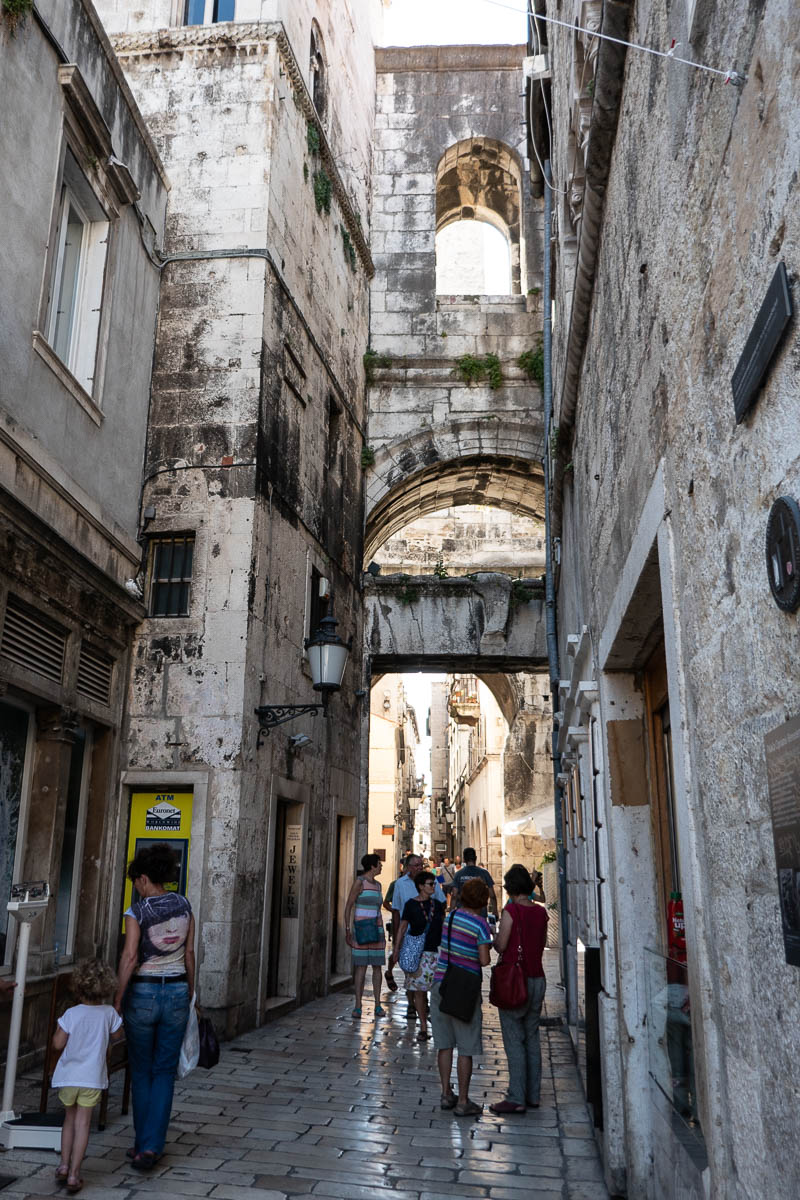
Diocletian’s Palace, the Main Attraction in Split

Diocletian’s Palace, which encompasses the old town, is about 215 meters by 180 meters. Picture a large rectangle area a bit longer than 4 America football fields placed two by two. The palace was built as a combination summer villa and military camp. It has four large towers in its corners and entryways on all four sides.

Over time, more modern structures were built that fit between the ancient construction in parts that had been destroyed over the years.
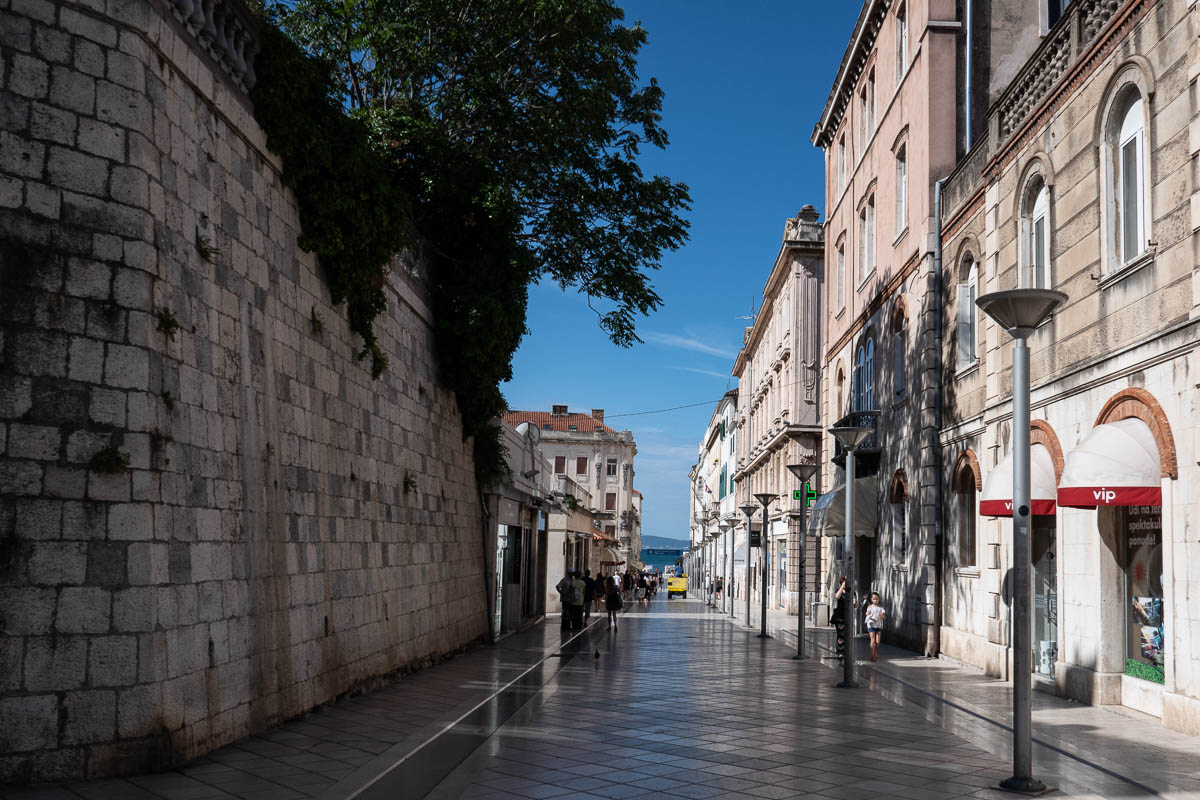
The entire palace area is in a pedestrian only zone except for small service vehicles. Side note: we’ve noticed that throughout Europe, “pedestrian only” is a term that is taken rather loosely. Today, the old town area includes many restaurants and shops, wonderful bakeries, and the ubiquitous ice cream/gelato stores that beckon at least once on every block.
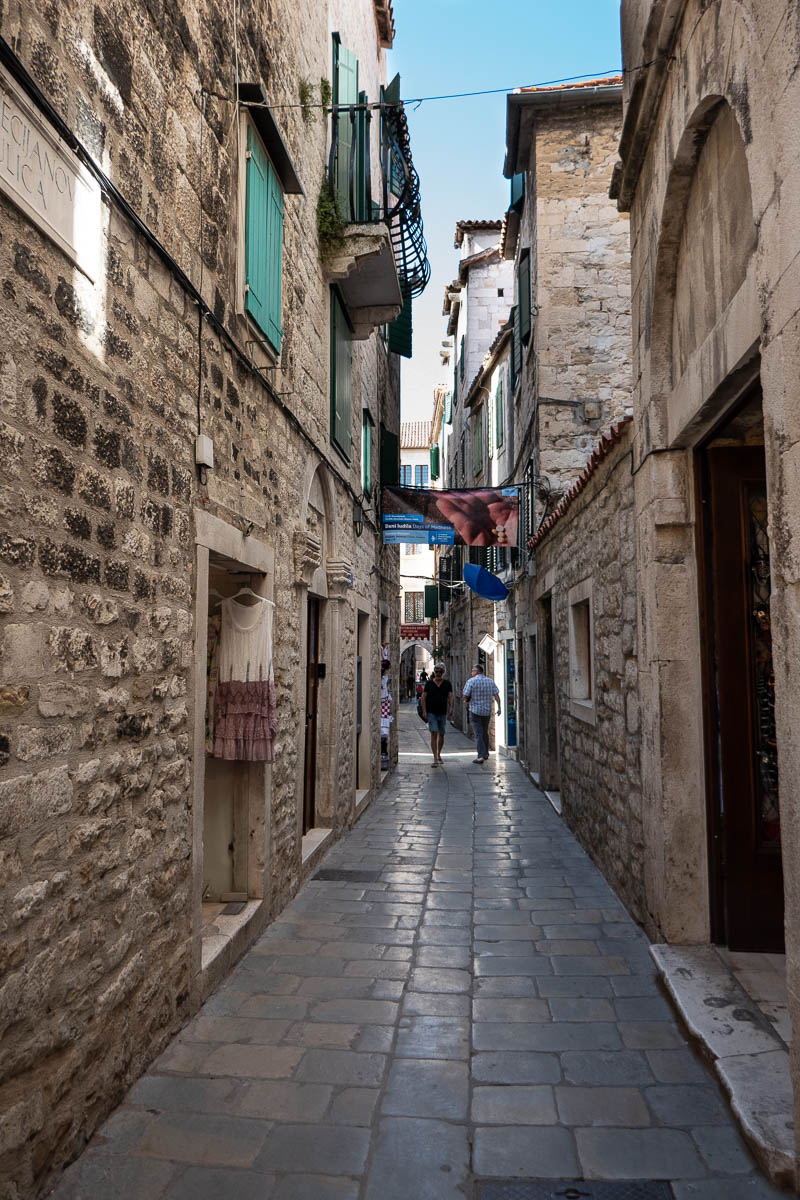
Visiting Parts of Diocletian’s Palace that Have Small Entrance Fees

As mentioned earlier, one of the reasons why Split is less expensive than Dubrovnik is that entrance to Diocletian’s Palace is free. Parts of the palace, including the cathedral, crypt, tower, baptistry, and cellars (where the Game of Thrones dragons were kept) have entrance fees, but these are small compared to fees for attractions in Dubrovnik.

There the old city walls alone cost 150 HRK ($23.50). We bought a combo ticket for entry to the cathedral, crypt, and baptistry, for 25 HRK ($4). It would have been 45 HRK with the bell tower included, but we didn’t feel inclined to climb many claustrophobic steps for a view. We climbed 63 steps daily just to get into our 4th floor apartment in the Communist-era block building with no elevator. The fee to visit the cellars is about 40 HRK.

The inside of the cathedral was very unusual and surprisingly small, we were glad we visited.
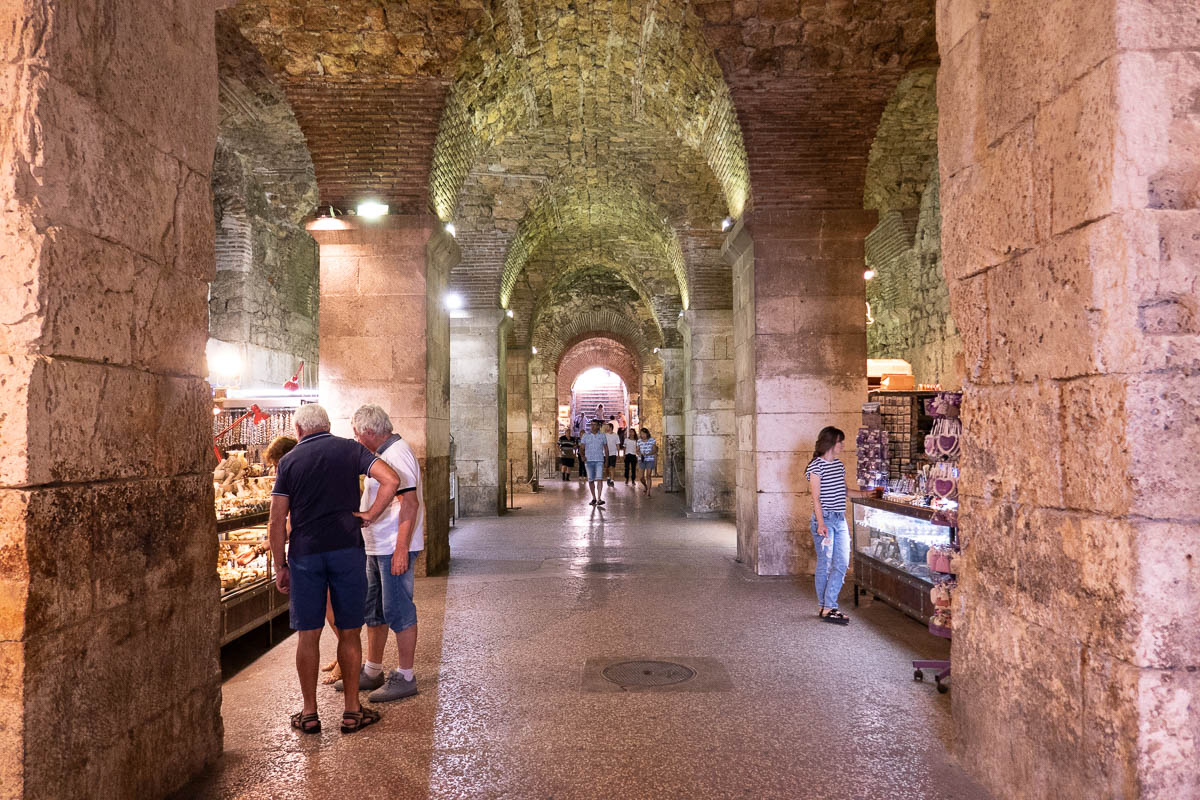
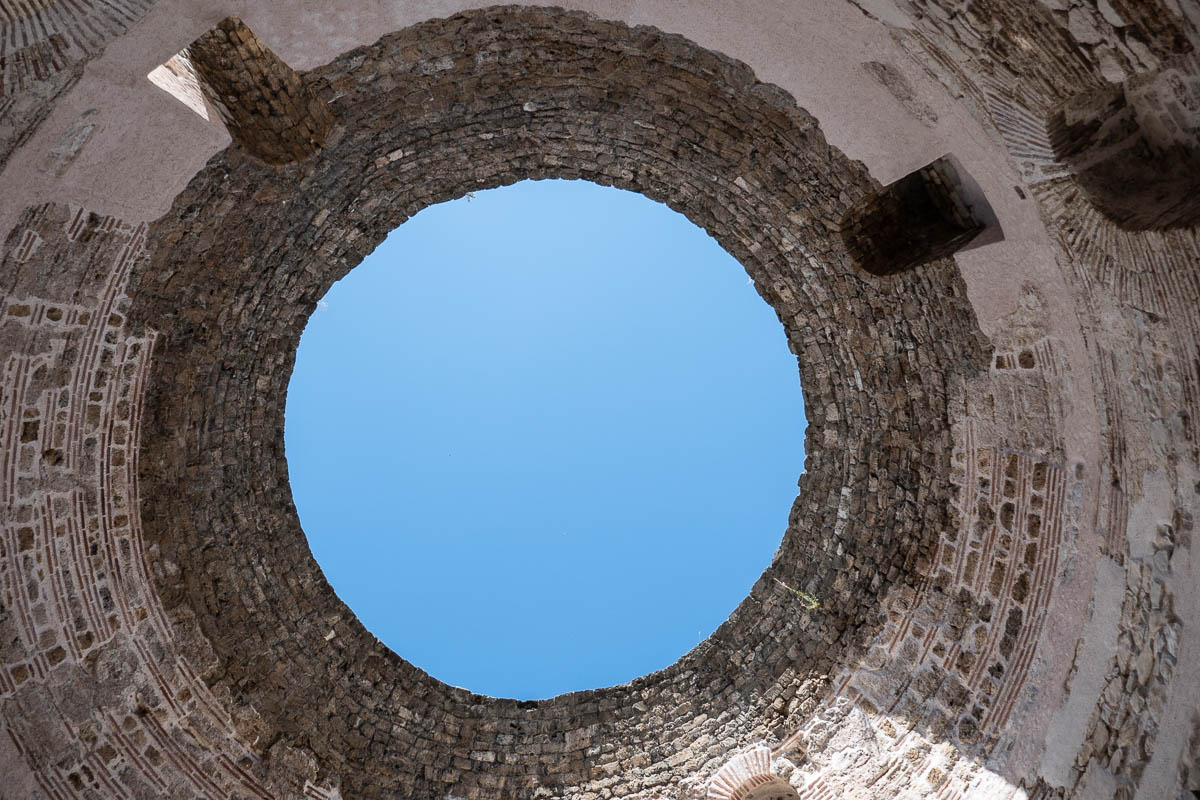
Food Prices – Another Way Split is Less Expensive than Dubroknik

Both grocery and restaurant prices are considerably cheaper than in Dubrovnik. Pazar, Split’s amazingly large outdoor fresh produce market, open daily except Sunday, with unbelievably low prices is located just outside the city walls. We just couldn’t stay away, we hardly missed a day during our two-week stay. The fish market is considerably smaller and located in the heart of the old town.
Restaurants have a wide range of prices, but it is easier to find less expensive options in Split.

Two restaurants we can recommend are Konoba Stare Grede and Semafor . Konoba is a general term for restaurant or tavern. One of the local dishes, recommended by our Airbnb host, that we liked is pasticada sa njokima, slow-cooked beef served in a rich sweet and sour sauce with gnocchi. We had some trouble finding it; at one restaurant, we were told it was on their winter menu. Our host also recommended crni rizot, which is black risotto, black from squid ink. We passed on that one. But one of our new favorite dishes (had it three times) is rizot od kozica, shrimp risotto – yum!
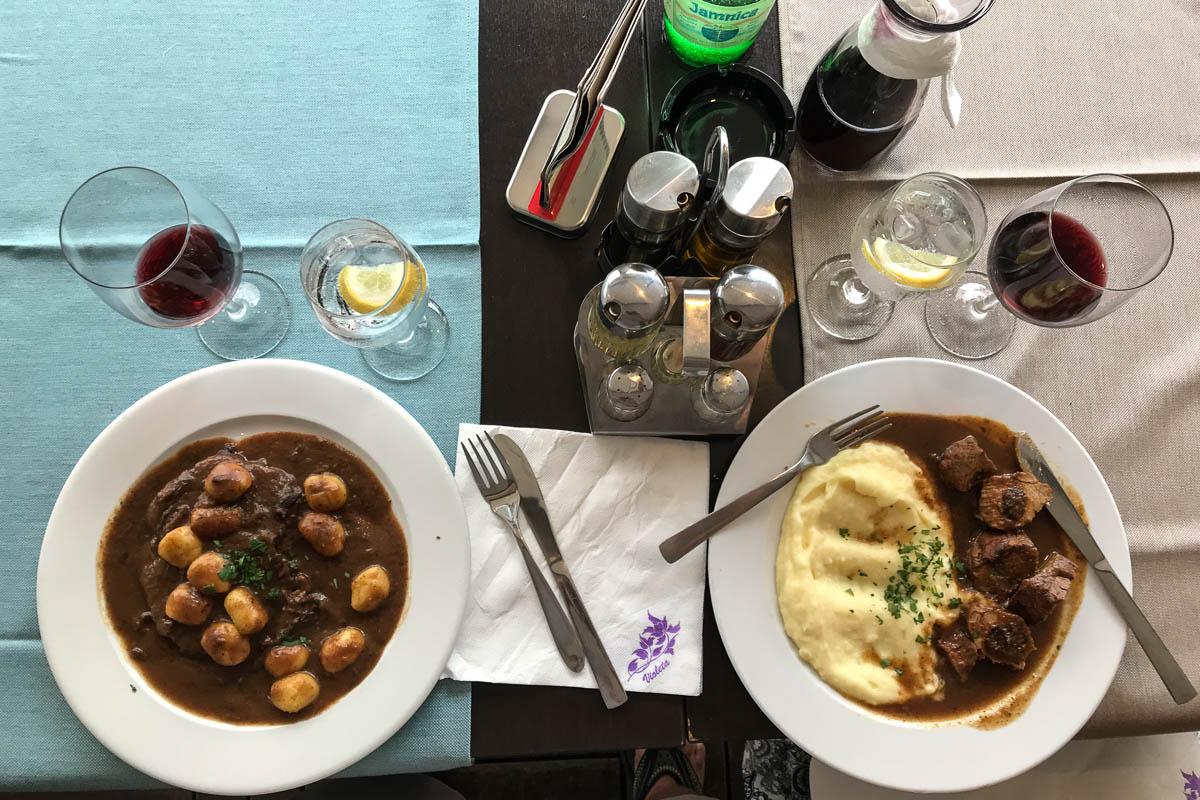
Croatian Coffee Culture
Coffee is a significant part of everyday life in Croatia. At all hours of the day, people sit for hours at outdoor cafes drinking coffee. Many of these cafes serve only coffee and drinks, no food. You want to sit for hours at a café with only one cup of coffee (which is accompanied by a glass of water), no problem. Friends meet for coffee rather than talk on the phone. Business deals are concluded over leisurely cups of coffee.
And here’s an interesting side note: most Croats drink espresso at the cafes but only Turkish coffee at home. In both of our Airbnbs, Dubrovnik and Split, the only coffee maker was the long-handled metal beaker used to make Turkish coffee. Ian became an expert, although he made it with extra water for us so as not to be so strong.
Our Relaxing Two Weeks in Split
As mentioned earlier, we were in Split for two weeks to take a break from moving around too much. And relax we did! Sure, we ventured outside every day but only for a few hours. Mostly, we just went to the Pazar outdoor market, grocery store, walked along the Riva, Split’s pleasant waterfront promenade. We had to walk through Diocletian’s Palace to get to these places, so we generally went out early in the morning to avoid the crowds. We also checked online to know when cruise ships would be in port.

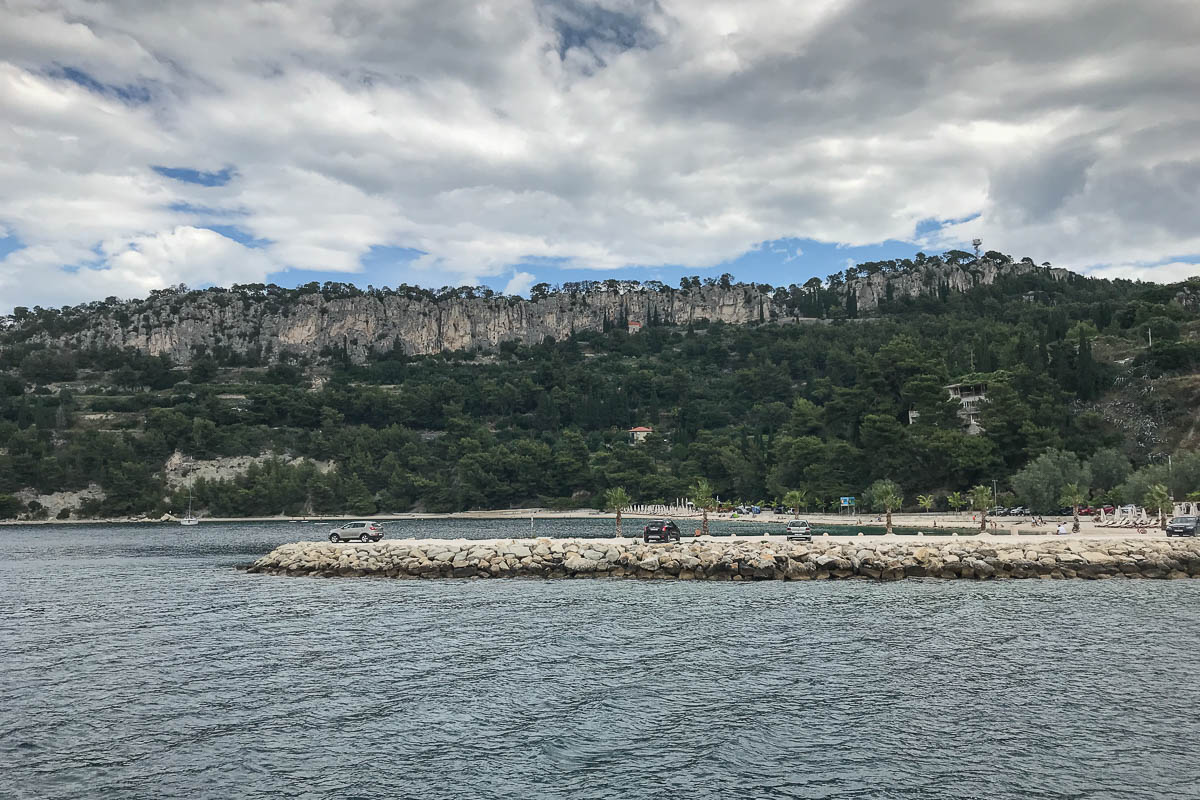
One day we did a very scenic and relaxing 90-minute boat ride around the Marjan Peninsula. Marjan is the large hill that rises from the sea. The cost was 150 HRK or 20 € per person, including a glass of wine. We had just been strolling along the Riva one day, passed the boat, and why not? We chose not to take a boat to one of the nearby islands, e.g., Brac or Hvar, as we had at least glimpsed them on our ride from Dubrovnik. And we were in chill mode.

We ate out only four times during the entire two weeks, preferring to relax, save money, and eat simple, healthy meals in our comfortable apartment. Oh, and did we mention several excellent bakeries? A couple of sausage rolls, basically a hot dog in flaky pastry, often did for lunch.
Beaches in Split

The weather was hot, with a breeze only sometimes, so the beaches were calling. The beaches in Split, like the rest of the Dalmatian coast, are pebbles or concrete. We were considering taking a local bus, about 30 minutes, to the popular Kasjuni Beach, but decided to pass. The local city beach, Bacvice, had a small sandy area, and we could walk to get there.

We went three times, first time to check it out, then twice to sit on the sand. The Adriatic Sea is so calm and clear here that standing up to our shoulders, we could see out toenails.

Bottom Line
While we enjoyed our time in Split, it was a bit too hot. Also, while Split is less expensive than Dubrovnik, it is still a bit too expensive for us to consider as a place to live, even part time.
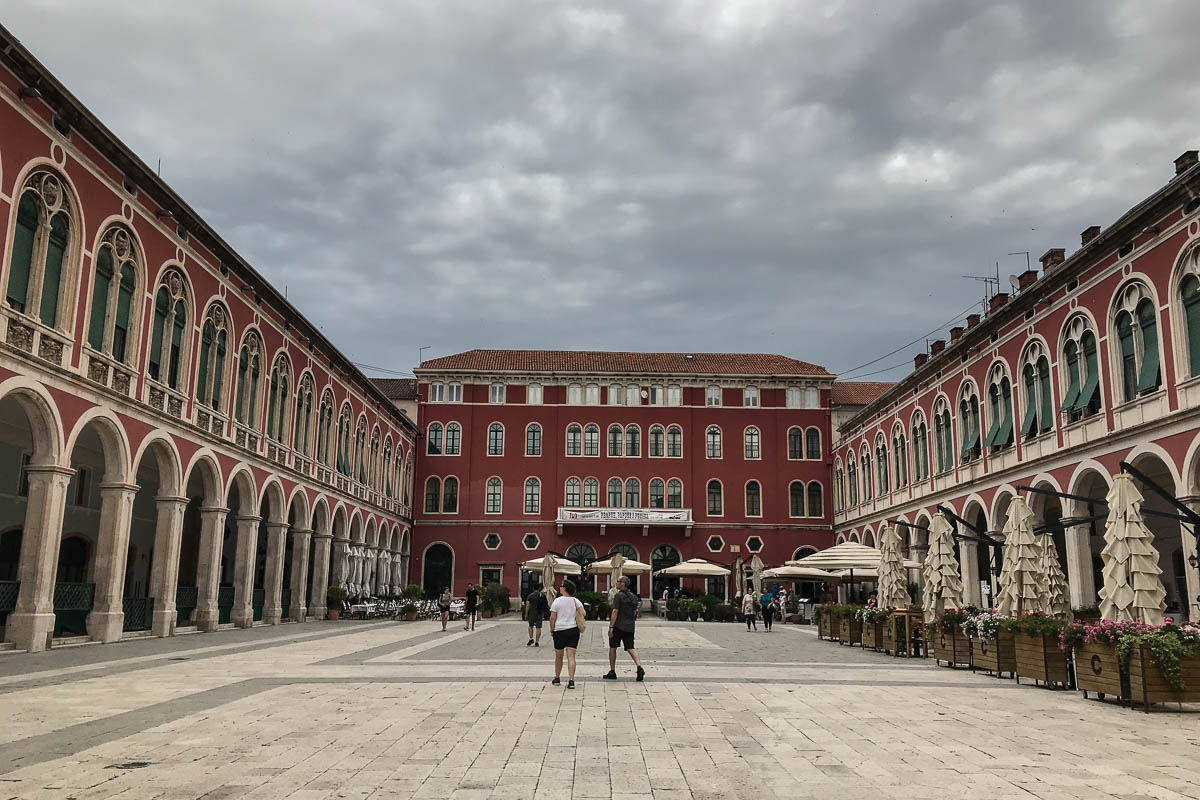

Next Up: Mostar in Bosnia and Herzegovina
Ian & Ann


8 Comments
You two look amazing and so relaxed. I’m so enjoying your journey!
Hi Carrie,
Thanks! You beat Norma (Ann’s mom) to it! She’s always commenting about how good we look.
Ian & Ann
Exquisite. The food on the two tables look like something special and very appetizing. Glad you enjoyed it. Well, if I ever saw a photo of two happy people, that was it. You look fantabulous., living a wondrous life. Stay well and safe. Until the next time. Love, Mom
Hi Norma,
Wish we could have sent you a taste of our food to sample.
Ian & Ann
Love your photos and travel tales. Wd never got to Split
Hi Ellie,
We hadn’t realized that Split wasn’t included in your trip. We think you would have liked it, a bit less touristy than Dubrovnik and Diocletian’s Palace is unique.
Ian & Ann
We didn’t go to Split but thanks to your photos and commentary, experienced it a little!
Hi Karen,
With all the places you’ve traveled, we would have thought you’d been there. Happy to provide you with a second-hand experience.
Ian & Ann